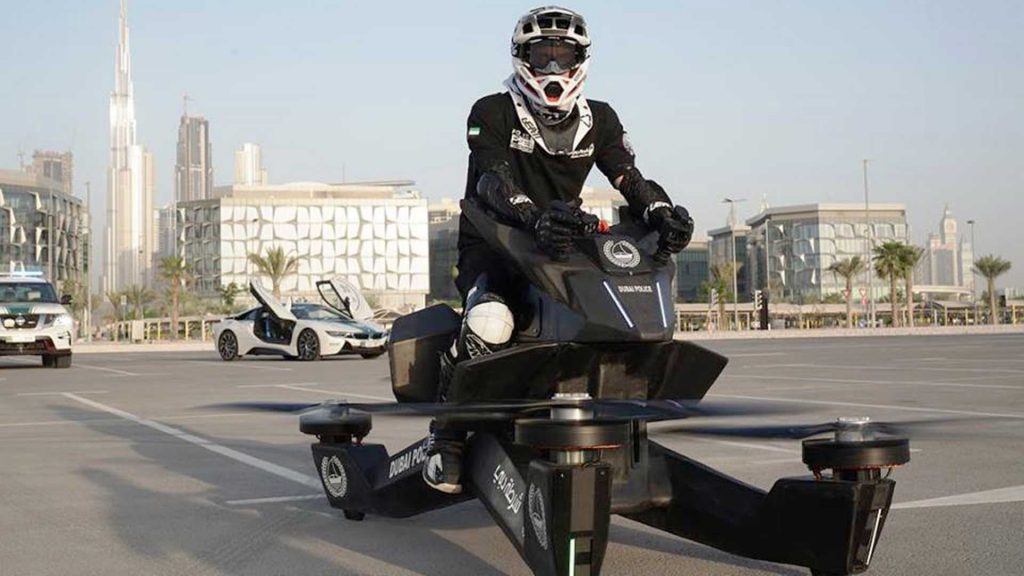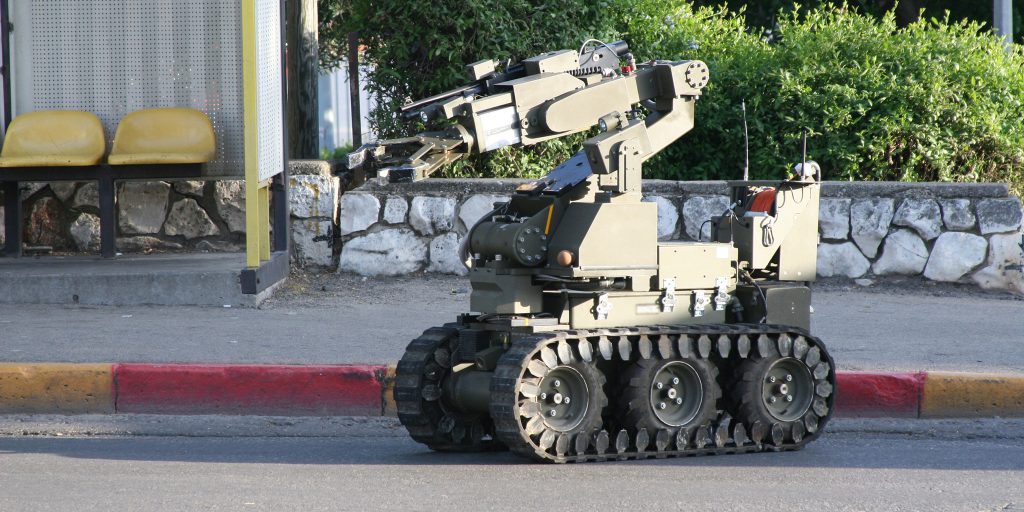Technology and policing have been interconnected for decades, dating back to the advent of the telephone, the automobile, and the two-way radio.
Nowadays, technology seems to be advancing at an ever-accelerating pace, as seen through the propagation of mobile and wireless technology, high-powered computing, visual and audio technology, and advanced analytics to name a few.
In just a few years, it’s clear that technology has changed the way police officers do just about everything, increasing efficiency and improving outcomes.
Hoverbikes and Robots

(Image source: motor1.com)
After bringing in Lamborghinis and Ferraris to patrol roads, Dubai police have enrolled a robotic officer, the first in a unit that aims to make up to a quarter of the force by 2030 (although the government said they would not be a replacement for humans).
As reported by the BBC, people will be able to use the robotic office to report crimes, pay fines and get information by tapping a touchscreen on its chest. Data collected by the robot will also be shared with the transport and traffic authorities.
In addition to the robot, the police force in Dubai is also testing the use of hoverbikes. California-based startup HOVERSURF has started to train the first police officers to fly its S3 2019 model, an electronic vertical take-off and landing (eVTOL) vehicle capable of hovering above the ground and speeding forward.
The hoverbikes are described by Khalid Alrazooqi, General Director of Dubai Police’s Artificial Intelligence department as a, “first responder unit used to access hard-to-reach areas.”

Some situations are too dangerous to risk sending police officers. That’s why robots, which were originally designed specifically for the military, are now being deployed into places where law enforcement can’t reach safely.
Today, driving a remote-controlled robot is no longer a childhood dream; officers can throw them into hard-to-reach areas or places without a clear line of sight and operate them wirelessly from safety.
In fact, police departments are already making use of this robotic technology to detect bombs or search suspicious homes and vehicles. And in the case of the Dallas shooter, Micah Xavier Johnson, a police robot made history by killing the suspect before he could endanger further officers’ lives.
The Use of Social Media to Solve Crime

Society has become one in which, though the value of privacy is important, everyone likes to share what they’re doing, thinking, and even eating at any given moment; principally through Facebook, Twitter, YouTube and Instagram.
For law enforcement agencies, crime analysts and even probation and community control officers, social media is beginning to prove itself as a crucial criminal justice tool in gathering intelligence, locating clues and even screening candidates for employment.
There has been a significant number of cases of police solving murder investigations based on photos and tips gleaned from Facebook posts; and undetected crimes have been successfully prosecuted as a result of videos posted to YouTube.
Body-Worn Cameras
Police body cameras are now small enough to be mounted on an officer’s uniform, and do far more than just promote public trust and accountability in the age of viral videos and demand for transparency.
They provide a helpful resource to police departments and protect officers from an increasing abundance of false claims of inappropriate behavior or abuse.
Every second of video that an officer’s camera records may be taken into evidence, providing a first-hand account of what took place during any interaction with the public. The cameras provide the officer’s perspective on the incident unfettered by testimony and witness reports.
Beyond this, departments can use the video footage to train and practice crisis scenarios, reviewing successful arrests and discovering areas for improvement.
Predictive Analytics
Law enforcement agencies have gained a powerful tool in the Internet with more data available than ever before. Using software dedicated to providing insight into criminal patterns and all legally warranted personal information, analysts are able to recognize connections between various activities and cases; even potentially predicting where the next threat will emerge.
These systems draw from a number of databases simultaneously, which helps law enforcement analyze information coming from mobile telephone service providers, banks, credit card companies, and many other public forms of data.
Technology continues to advance and change, and in so doing, it advances and changes the profession of law enforcement. With proper restraint and respect for constitutional concerns, the use of technology in criminal justice will continue to allow crime fighters to further their ability to serve and protect. So what can we expect the policing profession to look like even 10 years from now?

